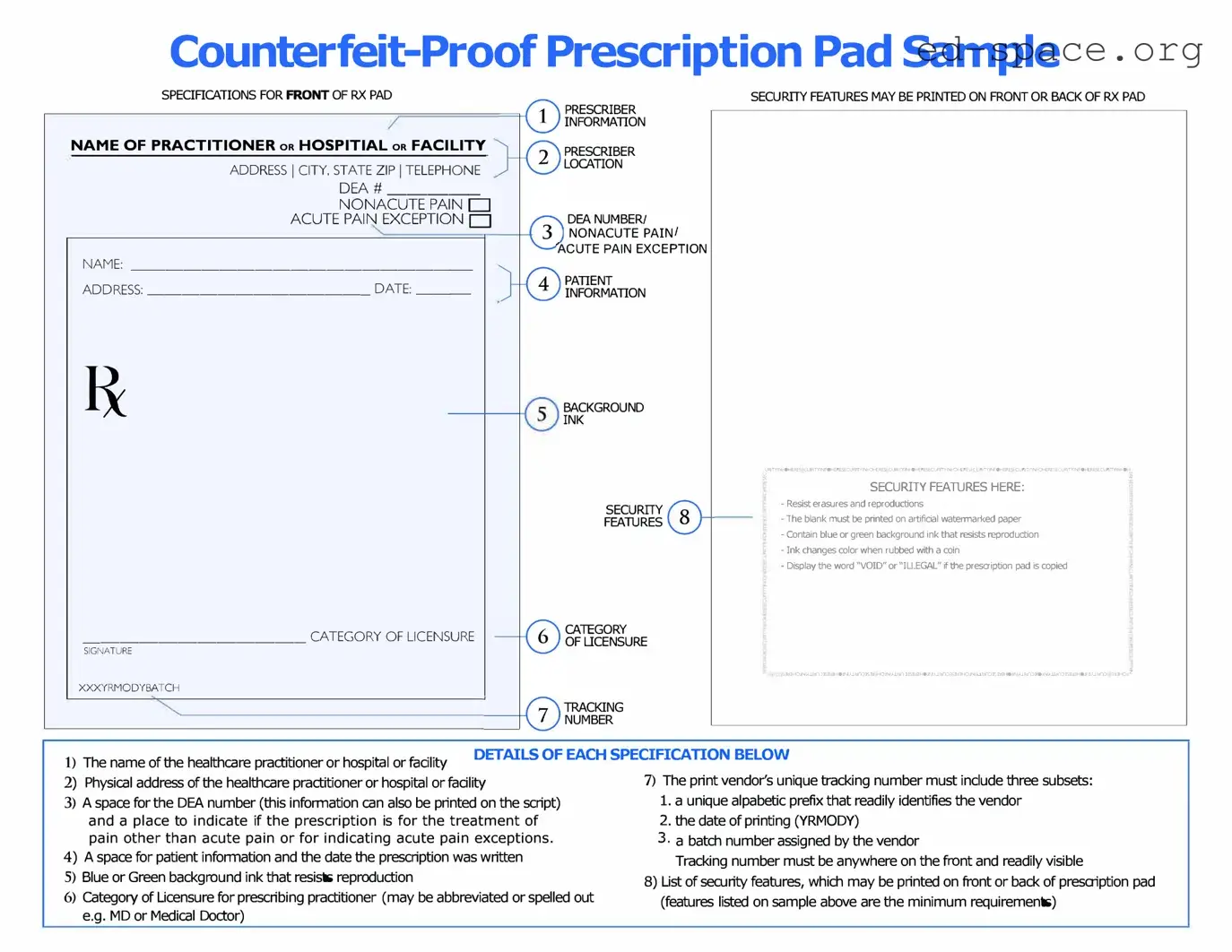What is a Prescription Pad form?
A Prescription Pad form is a document that licensed healthcare providers use to prescribe medication to patients. It usually contains the patient's name, the medication prescribed, dosage, frequency, and the doctor's signature. These forms can vary based on the state’s requirements and the healthcare provider's practice.
Who can legally write a prescription using a Prescription Pad form?
Only licensed healthcare providers, such as doctors, nurse practitioners, and in some cases, dentists or psychiatrists, are legally allowed to write prescriptions using a Prescription Pad form. The exact requirements can vary by state, so providers must adhere to local laws.
Is there a difference between electronic and paper Prescription Pad forms?
Yes, there is a difference. Electronic Prescription Pad forms are part of an electronic prescribing system (e-prescribing) that allows healthcare providers to directly send prescriptions to a pharmacy electronically, improving accuracy and speed. Paper Prescription Pad forms are the traditional method and must be physically presented to a pharmacy. Both have legal standing but electronic forms are becoming more standard due to their convenience and security features.
How do I know if a Prescription Pad form is valid?
A valid Prescription Pad form will have the patient's name, the prescribed medication with dosage instructions, the date of the prescription, and the healthcare provider's signature and credentials. Some states also require a DEA (Drug Enforcement Administration) number for controlled substances. Pharmacies typically verify the authenticity of a prescription before dispensing medication.
Can a Prescription Pad form be used for over-the-counter (OTC) medications?
While prescriptions are not required for over-the-counter (OTC) medications, a healthcare provider may use a Prescription Pad form to recommend specific OTC medications to ensure the patient gets the correct item. Such prescriptions might help with insurance coverage for certain OTC medications as well.
What should I do if I lose my Prescription Pad form?
If you lose a Prescription Pad form, contact your healthcare provider as soon as possible to explain the situation and request a new prescription. Depending on the medication, the provider may need to write a new prescription or can possibly send it electronically to your pharmacy.
How can I protect myself from prescription fraud?
To protect yourself from prescription fraud, always keep your Prescription Pad forms in a secure place, and only give them to a trusted pharmacy. Be cautious of any unknown calls or messages asking for your prescription information. If you suspect fraudulent activity, report it to your healthcare provider and the local authorities immediately.
Are there alternatives to using a Prescription Pad form for getting medication?
Yes, electronic prescribing is a popular alternative to paper Prescription Pad forms. Some healthcare providers may also call the pharmacy directly to prescribe medication, especially in urgent situations. However, for controlled substances, stricter regulations might apply whether the prescription is electronic or on paper.

